|
It may still be summer, but the tease of fall is in the air. A smattering of leaves are beginning to float down from the deciduous trees, the sun is setting earlier in the evening and rising later in the morning. I’m hearing less hummingbird chatter, which means they have begun their migration south. This past week, daytime temperatures have been mild, with deliciously cool nights. All of this is a reminder that autumn is rapidly approaching. Just as the seasons shift, so too do our cravings at the table and in the glass. While red, white, and rosé wines can be enjoyed year-round, many wine lovers have seasonal favorites. As autumn and cool temps advance, red wines often take center stage, edging out the lighter wines that we enjoy in summer’s heat. Here are three red wines to welcome autumn. Domaine Bousquet Reserve Organic Malbec 2023 Domaine Bousquet has made frequent appearances on my website, and I’ve enjoyed reviewing their wines on numerous occasions. This family-owned estate is located in the Gualtallary Valley, high up in the Tupungato district of the Uco Valley in Argentina’s Mendoza region. It is Argentina’s largest producer and exporter of organically grown wines. To learn more about their vineyards and wines, click “Domaine Bousquet” in the Categories section on the right. This wine is a blend of 85% Malbec, 5% Merlot, 5% Syrah, and 5% Cabernet Sauvignon. These certified organically grown grapes are harvested from the estate’s best plots in the Uco Valley. This wine is aged 50% in 2nd-use 400L French oak barrels for six months, with the remaining in stainless steel and concrete tanks. Nose: Dark berries, plum, and spice, with a hint of floral and oak. Palate: Layered with plum, blackberry, raspberry, dark cherry, chocolate, and pepper, ending on a long, silky finish. Nicely balanced with soft tannins and good acidity. Alcohol: 14.5% SRP: $18 Pairing suggestions: Grilled meat, pasta, stews, seared tuna, and spicy Asian cuisine. Famiglia Cotarella Sodale Merlot Lazio IGT 2020 Famiglia Cotarella is family-owned business spanning three generations of grape growers and winemakers from Umbria, Italy. Today, sisters Dominga, Marta, and Enrica Cotarella control the family estates. Their mission is to further tie the company’s identity to its native terroir and the family name. Their portfolio includes classic Italian blends and single varietal expressions of Merlot and Sangiovese from Lazio, Umbria, and Montalcino. This wine is 100% Merlot. Grapes were hand-harvested from vineyards in the Lazio region. After fermentation, the wine was aged for nine months in neutral French oak barrels. Fined and lightly filtered before bottling, the finished wine was aged for several months in bottle before its release to market. Nose: Violets, red fruit, baking spice, and subtle hints of cherry. Palate: Round and smooth with notes of dark berries, plum, dark cherry, and spice. A touch of vanilla and cherry tobacco lingers on a long finish. Alcohol: 14.5% SRP: $25.99 Pairing suggestions: Roasts, game, poultry, mushroom risotto, and hearty stew.. Lázuli Cabernet Sauvignon 2017 Vina Aquitania is a partnership of four distinguished winemakers and vineyard owners. Bruno Prats and Paul Pontallier (RIP) of the Bordeaux region, Ghislain De Montgolfier of Champagne, and Felipe De Solminihac, a renowned oenologist in Chile. They produce limited quantities of Chilean wine inspired by the Bordeaux tradition. This wine is 100% Cabernet Sauvignon, hand-harvested from 25 to 30-year-old vines planted in Peñalolén, a commune bordering Santiago de Chile at an elevation of 2,300 feet in the Maipo Andes. The wine was aged for 16 months in French oak barrels and is named after Lapis Lazuli, the beautiful blue gemstone found in Chile. Nose: Lots of dark fruit, floral notes, jammy plum, and subtle hints of baking spice, earth, and herbs. Palate: Aromas segue onto the palate with blackberry and cherry tobacco. This is a balanced and complex wine with a playful amount of acidity. Alcohol: 14.5% SRP: $45 Pairing suggestions: Enjoy with roasted meat, venison, seared tuna, spicy cuisine, and dark chocolate desserts. What red wine will you pour as the leaves turn? Until next time…
Cheers! Penina To leave a comment or if you have an inquiry, please contact me at [email protected] With over 20 grape varieties grown in Chile, the Carménère grape has become Chile’s “signature” grape. Carménère is a member of the Cabernet family and was originally planted in the Medoc region of Bordeaux, France. It is considered part of the original six grapes of Bordeaux. The name Carménère is derived from the French word crimson. It was thought to be extinct after the European phylloxera outbreaks in the 19th century. However, the grape was rediscovered in Chile in the 1990s. Chile now has the largest area of planted Carménère in the world. Today, Carménère grows chiefly in the Colchagua Valley, Rapel Valley, and Maipo Province of Chile and produces the majority of Carménère wines. Carménère is known for its deep red color with fruit-driven blackberry, cherry and spice flavors. Here is a sampling of six noteworthy wines. In Situ Reserva Carménère 2021 José Vincente founded In Situ Family Vineyards in 1974. After growing grapes for 20 years, he and his son Horacio decided to build a winery and produce high-quality wines in the Aconcagua Valley. The winery is located in San Esteban, Region V, Chile. The Upper Aconcagua terroirs are well-suited to wine growing with a unique combination of soil, light, and water. This wine is 95% Carménère and 5% Cabernet Sauvignon, handpicked from two vineyards. One is located on the slopes of Paidahuen hill (3,000 feet above sea level); the other vineyard is on the riverbanks of the Aconcagua River. The wine is aged in 50% French and 50% American 225-litre oak barrels for 12 months. After bottling, this wine was aged for at least three additional months before release. Nose: Dark fruit, spice, herbal notes, and a hint of cedar. Palate: Dark cherry, dark berries, baking spice, anise, a hint of cocoa, and acidity blended into the mix. Alcohol: 13% SRP: $13 Pairing suggestions: In Situ suggests honey-roasted lamb or pork in mustard sauce. Try seared tuna in peppercorn sauce as well. InVINA Luma Chequen Gran Reserva Carménère 2020 InVina is a family-owned winery that the Huber family founded in 2007. With over 20 years of experience in Chilean viticulture and wine, they are focused on investing in and developing vineyards in the Maule Valley. They are also focused on producing quality grapes and wine. This 100% Carménère is handpicked from the best lots of InVina’s estate vineyards in the Maule Valley appellation. The wine is aged in oak barrels for 12 months and bottled with minimum filtration. Nose: Ripe, lush berries, cherry, herbs, forest floor, and a hint of bell pepper. Palate: Dark cherry, blueberry, baking spice, chocolate, and pepper. It is a smooth and fresh wine with a hint of sapidity on the finish. Alcohol: 13.9% SRP: $17 Pairing suggestions: Enjoy with aged cheese, game, beef stew, spicy cuisine, or vegetable risotto. Morandé Vitis Única Carménère 2021 Viña Morandé was founded by Pablo Morandé in 1996. He was the first person to plant vines in the Casablanca Valley, and also has vineyards in Maule Valley and Maipo Valley. The company is dedicated to implementing sustainable practices to benefit the environment in their decision-making processes. Their eye is on traditional with an innovative spirit in the vineyards and winery. The grapes for this 100% Carménère are handpicked from the San Bernardo estate, located in the Maipo Valley. The vines are planted in a bed of pure gravel. This wine is aged for about 16 months in 80% French oak foudres and 20% in new French oak barrels. Nose: Hints of violet with cherry, dark berries, baking spice, pepper, and espresso beans. Palate: Aromas segue onto the palate with persistent and vibrant fruit, earthy forest floor, and smooth tannins. The finish is long, with chocolate, spice, and cherry lingering. Alcohol: 13.5% SRP: $20 Pairing suggestions: Viña Morandé suggests stews, white meat, creamy pasta, young cheese, and dark chocolate. Primus Carménère D.O Apalta 2020 Primus Winery was founded over 20 years ago by Agustin Hunneus. The estate is located in Apalta, a sub-region of Colchagua Valley. This exclusive appellation gained Denomination of Origin (D.O.) status in 2018. Only seven wineries have the privilege of owning vineyards here. Primus is Latin for “the first” or “the first among its peers.” Primus is the pioneering regenerative organic and biodynamic winery of Apalta, with vines dating back to 1889. The grapes for this 100% Carménère were harvested from the highest part of their organic vineyard and in the lower part of the property as well. The wine was aged 12 months in French oak barrels, 18% new barrels. Nose: A hint of floral with cherry, blueberry, spice, herbs, and cocoa. Palate: Vibrant and fruity with dark cherry, berries, baking spice, and silky tannins. A touch of pepper and minerality linger on a long finish. Alcohol: 14.5% SRP: $21 Pairing suggestions: Primus suggests beef empanadas, lamb curry, and stews. TerraNoble CA2 Costa 2020 TerraNoble, founded in 1993, is in the Maule Valley of Chile. TerraNoble initially presented itself as a boutique winery specializing in Merlot. However, in 1994, Chilean Merlot was identified as Carménère, so TerraNoble committed to this rediscovered variety. Since then, they have extended viticultural experimentation and innovative winemaking practices to the Colchagua and Casablanca valleys. The grapes for this 100% Carménère are handpicked from their vineyard plots in the Colchagua Valley ’Costa’, Lolol vineyard, 40 kilometers from the ocean. 58% of the wine was aged in untoasted foudres, and 42% in new and previously used 300-lt French oak barrels for 16 months. It was then further aged for nine months in bottle. Nose: Lush red fruit, spice, earth, dark coffee beans, and herbs. Palate: Dark berries, herbs, and spice blend with silky tannins that are nicely balanced with acidity. The finish is long, with dark chocolate, espresso, and a hint of herbs and minerality lingering. Alcohol: 14.5% SRP: $36 Pairing suggestions: TerraNoble suggests thick ribs, oven-roasted beef brisket, risotto, or seasoned foods. Montes Wings Carménère 2020 Montes Winery is based in the Colchagua Valley, Chile, with its vineyards spread throughout the country. It was established in 1987 by original partners Aurelio Montes and Douglas Murray. In 1988, Alfredo Vidaurre and Pedro Grand joined the partnership. These visionaries created a company recognized worldwide today, with their wines exported to over a hundred countries. Wings was created from a long-running dispute between Aurelio Monte Sr. and his son, Aurelio Jr. His son wanted to produce a “more free-flowing style of Carménère.” The result is Wings. It is 85% Carménère and 15% Cabernet Franc. Grapes for this wine are sourced and hand-picked from their Finca de Apalta estate in the Colchagua Valley. The wine was aged in new French oak barrels (80%) and second- and third-use barrels (20%) for 16 months before bottling. Nose: Dark berries, cherry, pepper, baking spice, tobacco, and a hint of fig. Palate: Lush dark fruit with spice and a touch of dark chocolate lingering on a long finish. Beautifully structured and complex. It will only get better with age! Alcohol: 14.5% SRP: $55 Pairing suggestions: Aged cheese platter, roasted/grilled meat, mushroom stew, lamb chops, or vegetable risotto. Happy sipping! Until next time…
Cheers! Penina To leave a comment or if you have an inquiry, please contact me at [email protected] Some of you might know Casa Gancia, an iconic wine producer located in Piedmont, northern Italy. In addition to making sparkling and still wine, the Gancia family lays claim to producing the first Metodo Classico wine in Italy. So what does this have to do with Argentina and Orfila wines? In 1905, Spanish immigrant José Orfila founded his winery in Mendoza, Argentina, where he grew grapes and produced wines from premium vineyards. In the meantime, in the 1940s, part of the Gancia family, under the leadership of Camilo Gancia, emigrated to Argentina from Italy. They began planting vineyards in Mendoza, and by 1965, the Gancia family had over 2500 acres of vineyards in the Uco Valley, Lujan de Cuyo, and Maipú. In 2010, the Gancia family acquired the Orfila winery and merged the winemaking traditions of both families. The unique terroir of this wine region combined with European traditions is the essence of Orfila wines. Juan Ruiz, export director for Orfila, said, “Orfila is a story of family winemaking tradition and some of the finest vineyards in Mendoza. We make wines that reflect the great character and quality of the vineyards, and we make them in a style that is easy to enjoy, with beautiful fruit structure and round tannins.” Over 70% of all Argentine wine is produced in Mendoza, and of that amount, approximately 85% is Malbec. Mendoza is located in the eastern foothills of the Andes, where the climate is dry and continental, making it an ideal environment for these high-altitude vineyards during the grape-growing season. Mendoza has several sub-regions that include Luján de Cuyo, Maipü, and the Uco Valley. See the map below. The Orfila vineyards are located in three sub-regions of Mendoza, Uco Valley, Luján de Cuyo and Maipú. Luján de Cuyo and Maipú are among the best areas in Argentina for making wines. The altitude range is 2625 ft. to 2953 ft., with average temperatures of 46 to 73 degrees. Uco Valley, where Orfila’s most prized vineyards are located, has an altitude range of 3280 ft. to 5250 ft., with average temperatures of 44 degrees to 71 degrees. The high elevations in these regions are beneficial to the grapes due to the high daytime temperatures and cooler nights. This diurnal temperature variation contributes to slowing the ripening process, extending the growing season, and allowing the grapes time to produce balanced sugar and acidity. Alluvial soil dominates the Mendoza wine region with loose sand over clay, allowing good drainage. “We try to preserve what the vineyards give us,” explains Orfila winemaker Guillermo Chavero, who credits the ideal and moderate microclimates, soils, and elevation for the distinctive characteristics of Orfila wines. He adds, “The growing conditions in Mendoza create little need for human intervention. There is a natural balance of the right amount of stress on the vines, which results in wines with beautiful fruit structure and round tannins.” That being said, he is committed to creating easy-to-drink wines crafted in the finest European tradition. The Gancia family practices state-of-the-art winemaking and growing practices. All vineyards are organically farmed, and certification is in process. Biodynamic farming techniques are also employed in some vineyards. The following Orfila wines reflect the elegance and “two winemaking worlds” this wine region offers. Orfila Estate Selection, Cabernet Sauvignon 2020
The grapes for this 100% Cabernet Sauvignon are sourced and hand-harvested from vineyards in Luján de Cuyo, Maipú, and La Consulta-San Carlos (Uco Valley.) 70% of the wine is aged for six months in French (70%) and American (30%) oak barrels. A final blend is assembled through a careful barrel selection and then bottle aged for three months. Nose: Red and black fruit, spice, smokey notes, and a hint of floral. Palate: Red and black fruit, raspberry, earthy with round tannins and fresh acidity. Alcohol: 13.9% SRP: $15 Orfila Estate Selection Malbec 2019 Grapes for this 100% Malbec are sourced and hand-harvested from vineyards in Luján de Cuyo, and Maipú. 70% of the wine is aged seven months in French (70%) and American (30%) oak barrels. A final blend is assembled through a careful barrel selection and then bottle aged for three months. Nose: Lots of dark fruit, berries, and plum. Palate: Ripe dark fruit, juicy plum, red berries, spice, with crisp acidity and smooth tannins. A touch of anise and dark chocolate linger on the finish. Alcohol: 13.9% SRP: $15 Orfila Malbec Reserva -Uco Valley 2018 This is Orfila’s signature Malbec. Grapes are sourced and hand-harvested from vineyards in Uco Valley and Luján de Cuyo. 80% of the wine is aged for 12 months in French (70%) and American (30%) oak barrels. A final blend is assembled through a careful barrel selection and then bottle aged for four months. Nose: Lush dark fruit, floral, cherry, and baking spice. Palate: Aromas segue onto the palate with mild tannins and integrated acidity. Pepper and blackberry linger on the finish. Alcohol: 13.9% SRP: $20 The above wines will pair nicely with roasted or grilled meat, poultry, seared tuna or salmon, hearty stews, aged cheese, or pasta. Until next time… Cheers! Penina To leave a comment or if you have an inquiry, please contact me at [email protected] I am on the virtual road again, this time visiting Viña Ventisquero Winery with seven prime vineyards located throughout many of Chile’s wine regions. Gonzalo Val, President of Agrosuper, one of Chile’s largest agro-industrial companies, owns the winery. Founded in 1998, Ventisquero was first established in the Maipo Valley, which is one of Chile’s most important wine-producing regions. Since then, Ventisquero has expanded and diversified its holdings to include vineyards in Casablanca, Colchagua and Leyda Valleys and the Atacama Desert. Felipe Tosso, head winemaker, along with winemakers Alejandro Galaz and John Duval make up an adventurous team that endeavors to explore, experiment and make an exception to the rule when producing wine. Their main quest is to preserve and honor the origins, the earth and its fruit. Above photos are courtesy of Ventisquero. From left to right: Felipe Tosso, Alejandro Galaz and John Duval Some of you might be asking, “What is a single block wine?” A vineyard is usually divided up into blocks/parcels. A single block wine is made from a single variety that is sourced from a single block within a single vineyard. I recently received four bottles of Ventisquero Grey Line Single Block wines for review. I asked Felipe Tosso what the motivation was behind making single block wines. He replied, “The main vision for creating single block wines was to add more value to the concept of "origins" and uniqueness of our vineyards. We found in our vineyards certain blocks with unique characteristics. We delimited and isolated these vineyards and created unique wines for our Grey Line, a commitment to terroir and a wine that is outstanding. Our main goal at Ventisquero is always to express the concept of origin and our Grey Single Block line is exactly the expression of Maipo, Colchagua and Atacama.” Grey Line Single Block Carménère 2017 This 100% Carménère is sourced from Block 5 of the Trinidad Vineyard in the Coastal Maipo Valley. The vineyard has atypical soil, sandy-clay in origin. The wine was aged for 18 months in extra fine-grain French oak barrels and then further aged in the bottle for eight months. Tantalizing aromas of dark fruit, dark raspberry, spice and earth make their way onto the palate. Notes of plum, black cherry, pepper and a hint of baking spice add to its complexity with lush dark fruit lingering on a long finish. This is an elegant wine that is beautifully balanced with smooth tannins and fresh acidity. Pair with grilled meat, game, hearty stews and seared tuna. Alcohol: 13.5% SRP: $24 Grey Line Single Block Pinot Noir 2017 This wine is 100% Pinot Noir. Grapes are sourced from Block 22 in the Las Terrazas vineyard located only four miles from the Pacific Ocean in the Leyda Valley. The soil here is a combination of granite, red clay and granite rock. A maritime influence contributes to minerality in the wines. It is aged for 12 months in French oak barrels. Subtle floral aromas mix with red berries, sweet spice and sour cherry. The palate offers juicy plum, black raspberry, spice and mineral notes. Excellent acidity and soft tannins make this a very food-friendly wine. Enjoy with seafood, pasta, fowl, salads and cheese. Alcohol: 13.5% SRP: $24 Grey Line Single Block Cabernet Sauvignon 2014 This is a blend of 93% Cabernet Sauvignon, 4% Petit Verdot and 3% Cabernet Franc sourced from Block 38 in the Trinidad Vineyard of the Maipo Valley. Cool climate and granite soils contribute to this expressive wine. It was aged for 18 months in extra fine-grain French oak barrels. Delectable aromas of red fruit, dark berries, spice, earth and a hint of tobacco set the stage for this impressive wine. Intense flavors of red plum, red berries, spice, pepper and a touch of floral add to the character of this wine. It is nicely balanced with silky tannins and good acidity. Serve with aged cheese, grilled meat and hearty stews. Alcohol: 13.5% SRP: $24 Grey Line Single Block Garnacha Cariñena Mataro (GCM) 2017 Grapes for this wine were sourced from Block 28 in the La Roblería, Vineyard in Apalta sub-region of Colchagua Valley. The vineyard is a short distance from the River Tinguiririca, and benefits from the mesoclimate and stony-sandy, red clay soils. This typical Mediterranean-style blend is 62% Garnacha, 19% Cariñena and 19% Mataro. It is the only red wine blend in the Grey Line. The wine is aged in extra fine-grain French oak barrels for six months, followed by a minimum of one month in the bottle. Aromas of fresh red fruit, savory notes, strawberry, sour cherry and spice segue onto the palate with plum, red berries, herbs, spice and tobacco. A touch of minerality blends nicely with the acidity and smooth tannins, adding to the wine’s complexity. This wine was not filtered or clarified, so natural sediment may appear over time. The winemaker recommends decanting this wine for 30 minutes prior to serving. Enjoy as an aperitif or with aged cheese, grilled meat, chicken, or seared tuna.
Alcohol: 14% SRP: $24 The talented winemakers of Ventisquero have successfully bottled the Chilean terroir! These are expressive wines that capture the essence of the various vineyards and blocks they represent. I asked Felipe what goals in winemaking he might still be looking to achieve. Felipe said, “This December marks 20 years for me working at Ventisquero, a very important milestone in my career as a Winemaker. Throughout these 20 years, the winery has given me the liberty and the chance to experiment, propose, and create amazing wines. I am quite lucky for that. Having the chance to plant in terroirs so special and different such as the Atacama Desert, for example for TARA Wines, and in the altitudes of Apalta, passing through Maipo Valley, Leyda and Casablanca. Working with one of the most talented winemakers in the world, and my friend, John Duval, has been a great achievement and an amazing adventure for me. I think I have achieved all of my goals as a winemaker. For my years to come, I wish to keep making wines, which reflect our diverse and wonderful Chilean terroir in each and every bottle. My approach to winemaking will always be to reflect the places where these grapes were born.” Until next time… Cheers! Penina To leave a comment or if you have an inquiry, please contact me at [email protected] |
Categories
All
|

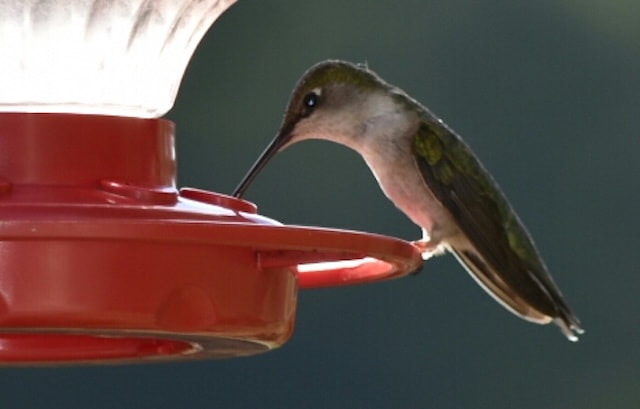
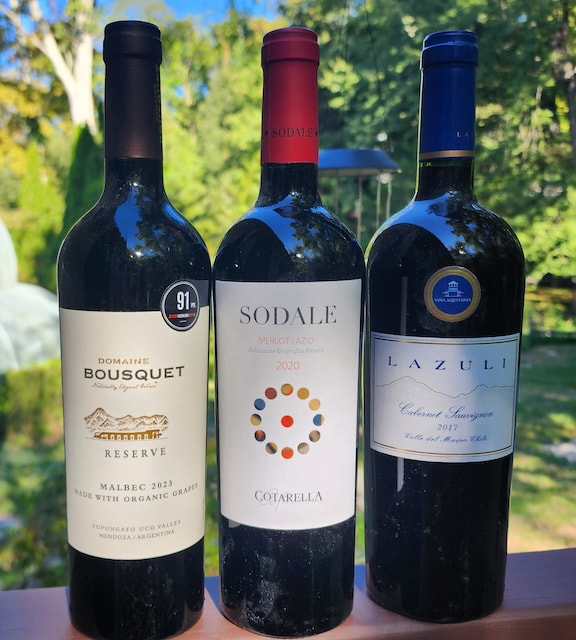
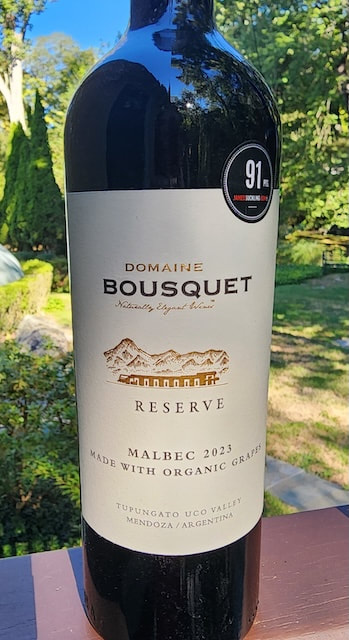
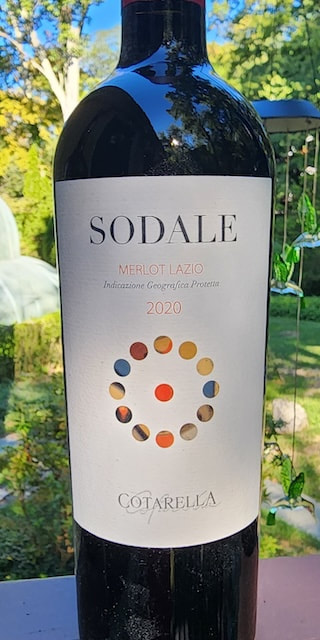
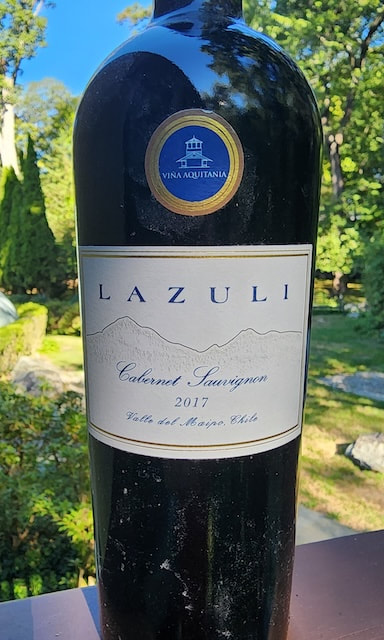
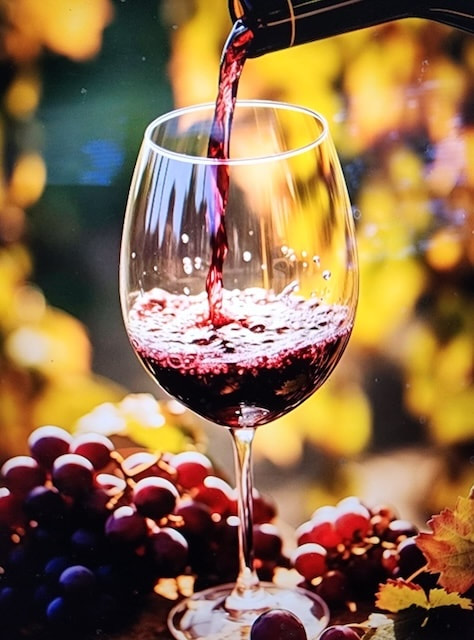
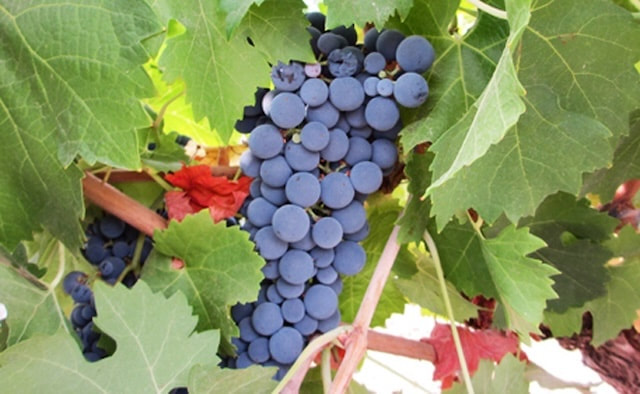
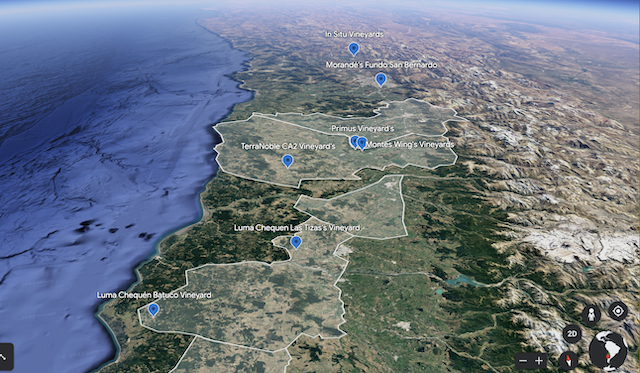
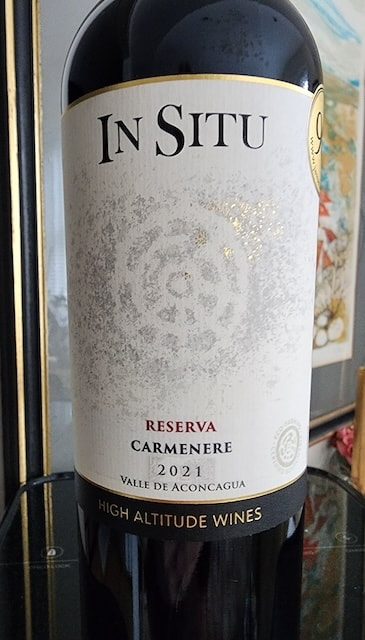
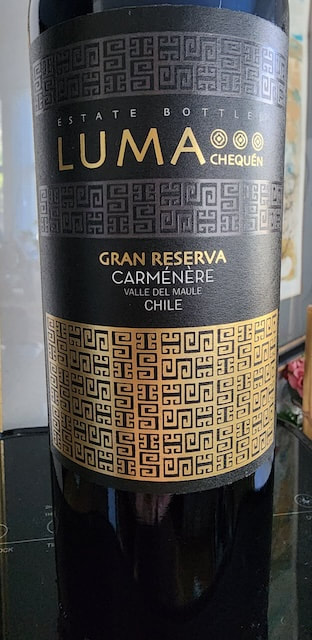
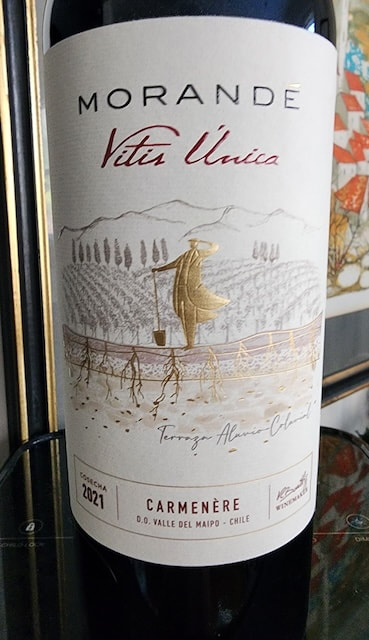
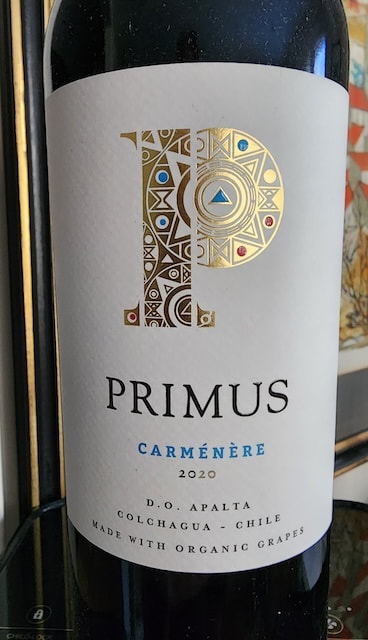
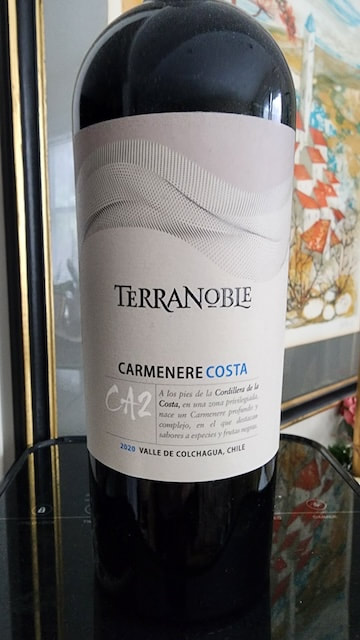
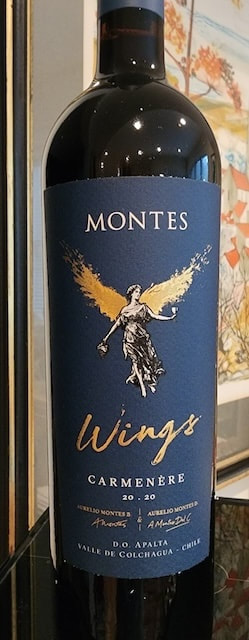
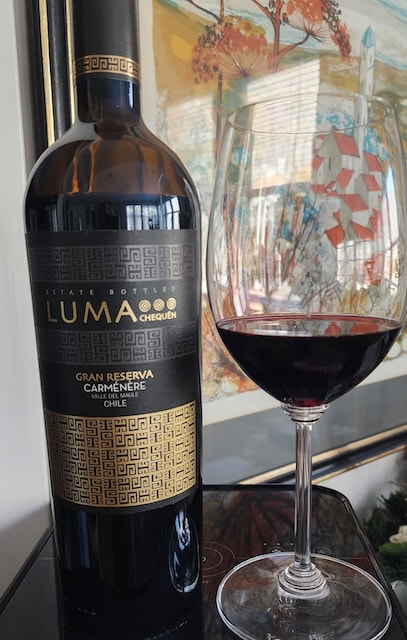
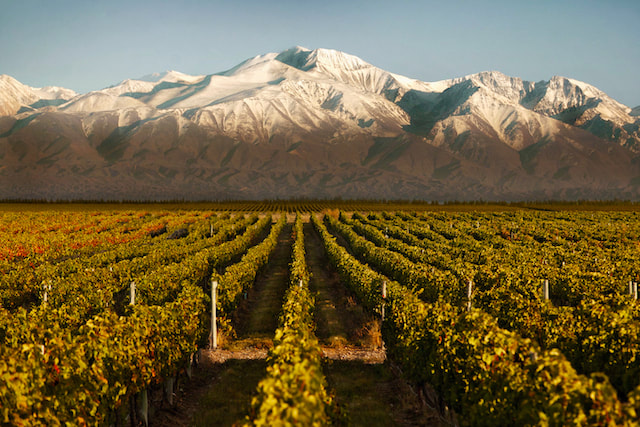
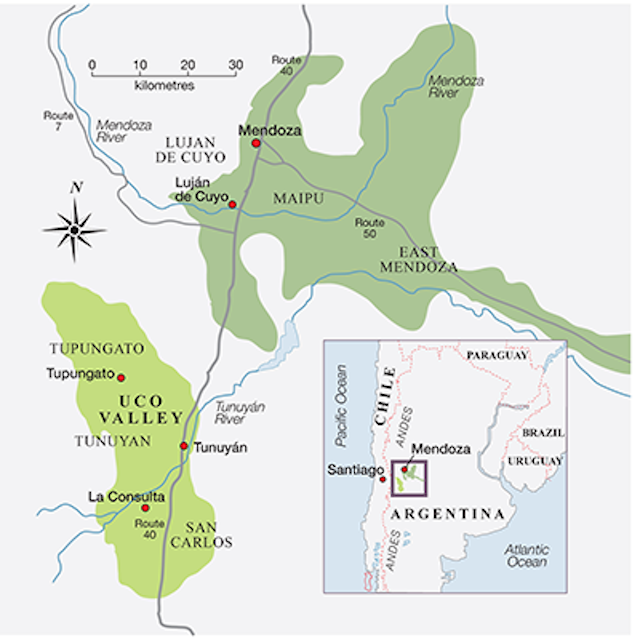
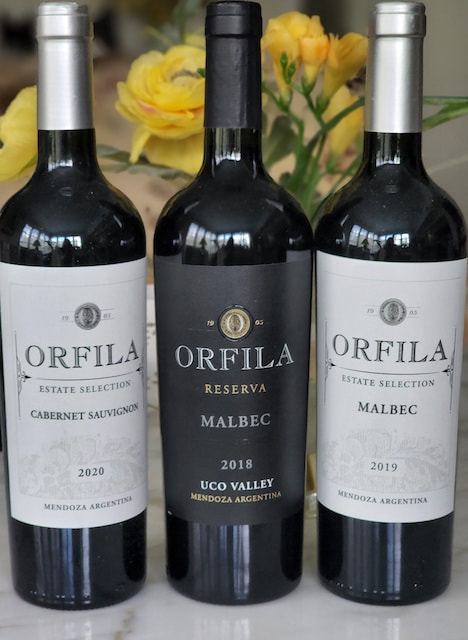
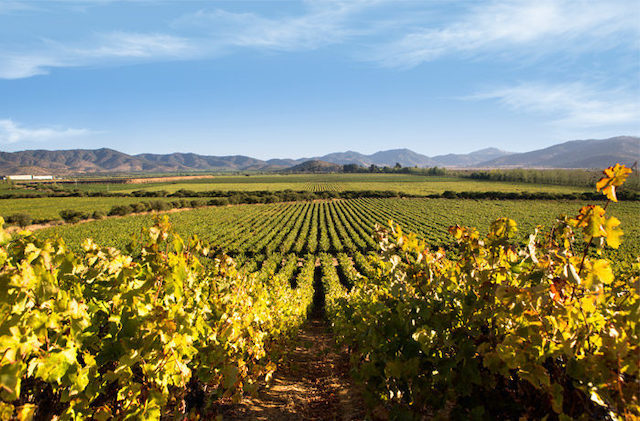
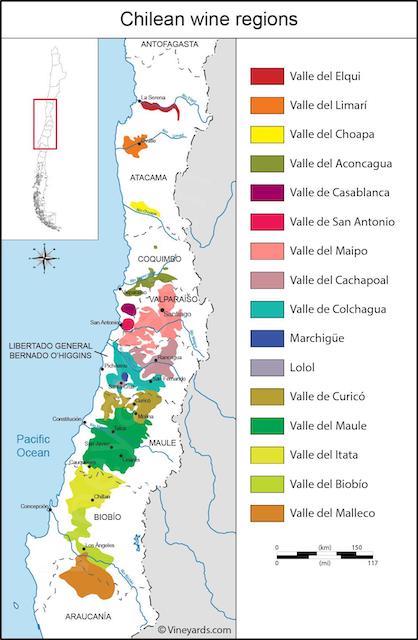


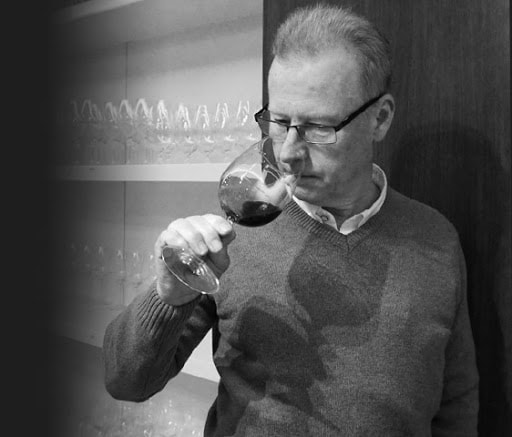
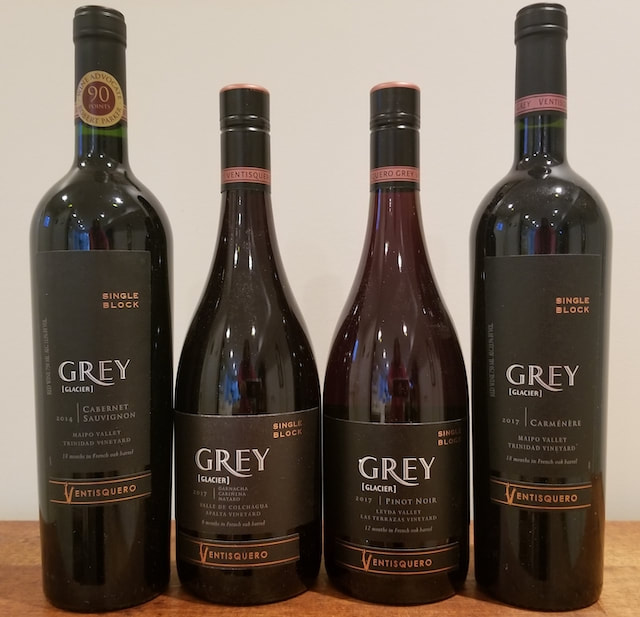
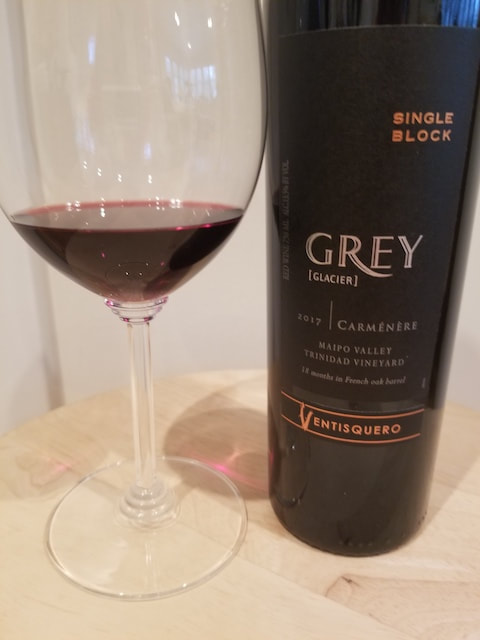
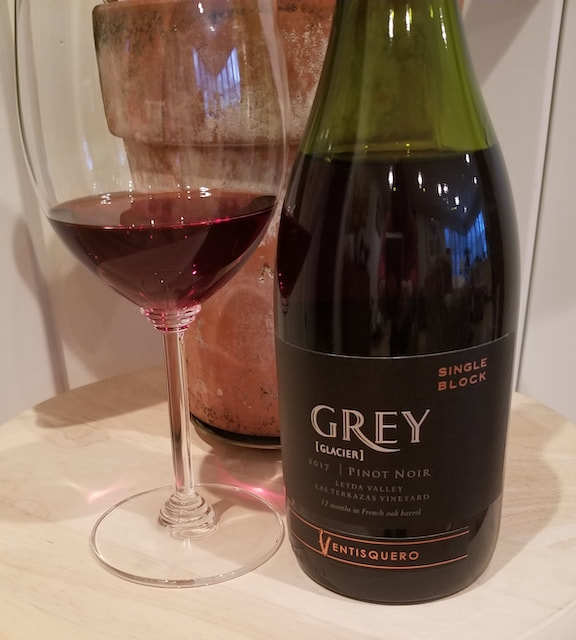

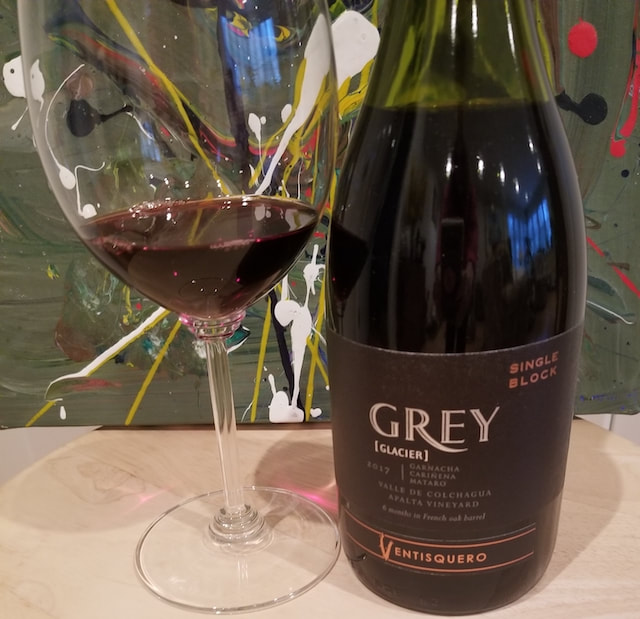
 RSS Feed
RSS Feed